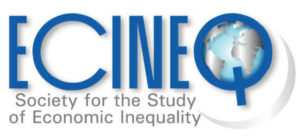Welfare Effects of the Labor Income Tax Changes on Married Couples
Working Paper 2021-590
Abstract
This paper develops a framework for assessing the welfare effects of labor income tax changes on married couples. I build a static model of couples’ labor supply that features both intensive and extensive margins and derive a tractable expression that delivers a transparent understanding of how labor supply responses, policy parameters, and income distribution affect the reform-induced welfare gains. Using this formula, I conduct a comparative welfare analysis of four tax reforms implemented in the United States over the last four decades, namely the Tax Reform Act of 1986, the Omnibus Budget Reconciliation Act of 1993, the Economic Growth and Tax Relief Reconciliation Act of 2001, and the Tax Cuts and Jobs Act of 2017. I find that these reforms created welfare gains ranging from -0.16 to 0.62 percent of aggregate labor income. A sizable part of the gains is generated by the labor force participation responses of women. Despite three reforms resulted in aggregate welfare gains, I show that each reform created both winners and losers. Furthermore, I uncover two patterns in the relationship between welfare gains and couples’ labor income. In particular, the reforms of 1986 and 2017 display a monotonically increasing relationship, while the other two reforms demonstrate a U-shaped pattern. Finally, I characterize the bias in welfare gains resulting from the assumption about a linear tax function. I consider a reform that changes tax progressivity and show that the linearization bias is given by the ratio between the tax progressivity parameter and the inverse elasticity of taxable income. Quantitatively, it means that linearization overestimates the welfare effects of the U.S. tax reforms by 3.6-18.1%.
Authors: Egor Malkov.
